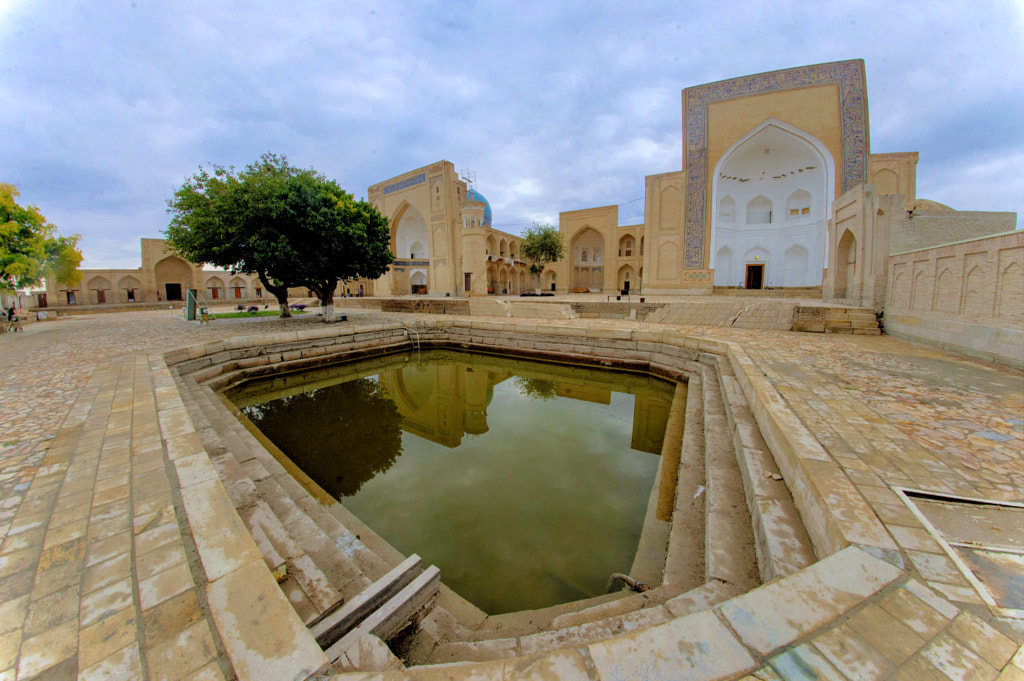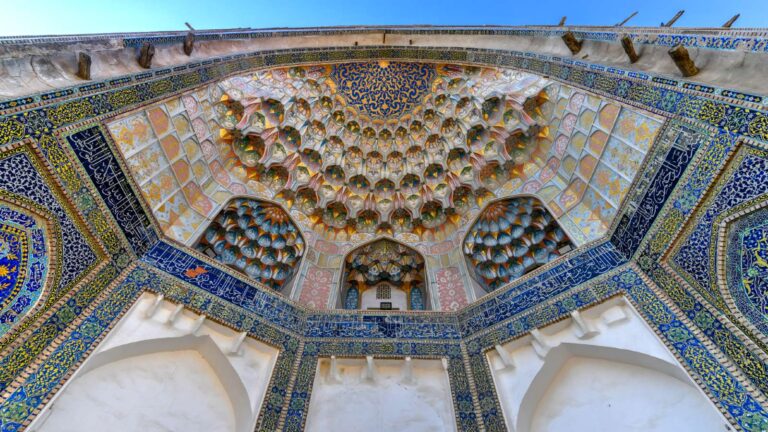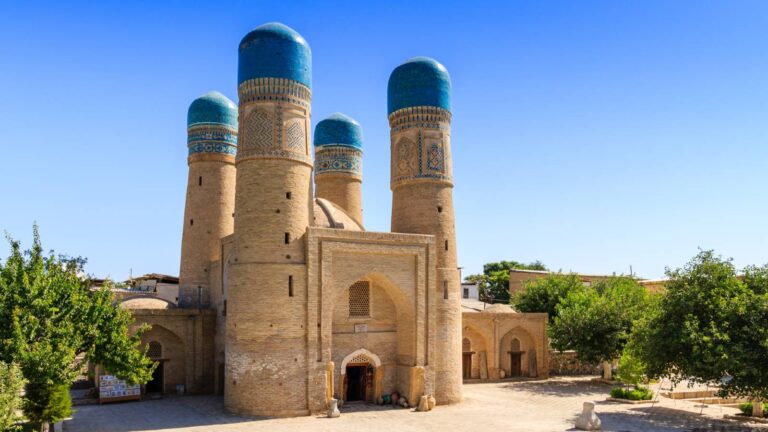Getting There
Visitors have the opportunity to get from Tashkent to Bukhara by car. This is one of the fastest. but there are expensive travel options. The distance from Tashkent to Bukhara in a straight line is 443 km. On highways – 580 km.
You can also get from Tashkent to Bukhara by long-distance train.
The third option is by taxi. This is one of the most expensive, but fast enough options. It will be most profitable for group trips. The transfer is carried out by minibuses and passenger cars.
The fourth one is that you can fly from Tashkent to Bukhara by plane. There are 4 planes available in the current direction. The average flight time is 1 h 10 min.
What to Expect
At the end of the 16th с Bukhara ruler Abdullah-Khan ordered that a madrasah, a mosque and a khanaka be built in the center of the necropolis, which meant to be a present for the Juybari dynasty. These three buildings form a large yard or even a square. They make up a beautifully integrated and harmonious architectural ensemble. The facades of the khanaka and the mosque are large portals with archways. Their side walls have two-tier loggias, which was not quite typical of such buildings. At the beginning of the 20th с they built a moderate size minaret at the open part of the yard – a replica of Kalyan Minaret in Bukhara.
There is an orchard called Chor-Bog in the northern part of Chor-Bakr Memorial Complex. It is full of fruit and ornamental trees, grapevines and roses. Two ditches, almost 5 kilometers long each, with trees along them run to the orchard from Bukhara. They made the alley for Abdullah-Khan to keep him in shade during his journeys to Chor-Bakr.
Chor-Bakr burial rules changed over the years and in the 19th с they buried all the members of the ruling dynasty, including women.
They believe in Bukhara that if a pilgrim in Chor-Bakr makes a wish and visits all the four mausoleums of the saints who all were named Bakr, this wish will certainly come true.
In the year 1560 the Shaybanid Dynasty ruler Abdullakhan II decided to memorialize the noble family, and ordered to build a mosque, madrasah and khanaka there. It was a gift to his teacher, Djuybar Sheikh Muhammad Islam Khoja, who died in 1563. The construction of the complex was completed the same year.
Died in 1593, Muhammad Islam’s son Khodja Bakr Sadi was buried next to his father. In after years other family members such as Abu Bakr Fazl and Tojidin Khasan were also buried there. These four men, who bore a title of “Bakr”, slumber in one khazira (tomb). “Bakr” is translated as “brother” and Chor-Bakr, as “Four Brothers”.
Khazira is a kind of burial structure, consisting of a courtyard surrounded by solid walls, with a single entrance in the form of beautifully decorated gate. It is this structure of the tomb which distinguishes Chor-Bakr from other religious burials in Uzbekistan, for instance the Shakhi-Zinda Necropolis. The whole complex is built the same way.
The khazira of Djuybar Seyyids, located in the north-western part of the complex, can be reached by a long corridor where each step is reflected from the brick walls with a ringing echo. Other khaziras located in the eastern part of the complex run long in a succession, stretching from north to south, and opposite to them, behind a small pond, there are buildings of a mosque and khanaka. It is notable that over time the burial rituals became less stringent and Chor-Bakr became just the Djuybar family tomb – all the dynasty members, including women were buried there.
A small minaret, which resembles the famous Kalyan in Bukhara, was attached to the complex early in the XX century, thus the territory of Chor-Bakr hosts now 30 architectural structures. In addition, to the north of the necropolis there is a large garden, set out as far back as the XVI century. It is planted with poplars, sycamores, willows and many fruit trees.
Chor-Bakr is really an unusual and mysterious place. Visiting Chor-Bakr you could not help but feel the breath of the world of the dead, where in the quiet of the alleys the thoughts of the frailty of life and the transience of human life unwittingly come into your head.
History
The village of Sumitan was given as a property domain to Juybari sheikhs during the reign of the first Uzbek Shaybanid dynasty. The first and the main grave the necropolis of the complex began to grow was Abu Bakr Saad’s, a descendant of the Prophet Muhammad. Abu Bakr Saad was believed to be the founder of the Juybari dynasty, which once had a great influence on the political and religious life in Bukhara.
In the course of time Chor-Bakr become a family necropolis of the Juybari dynasty. During the centuries to follow the territory of Chor-Bakr was filled with mausoleums with fenced dahma tombstones.
Facilities Available
Ark hotels, Ayub Boutique Hotel and Sim-Sim hotel are located near Bukhara Char Bakr. Hotels are very much appreciated by tourists and locals. Bukhara Char Bakr and other attractions are a 5-minute walk from the hotel.
Near the madrasah there are many European and national restaurants serving European and national cuisine.
















